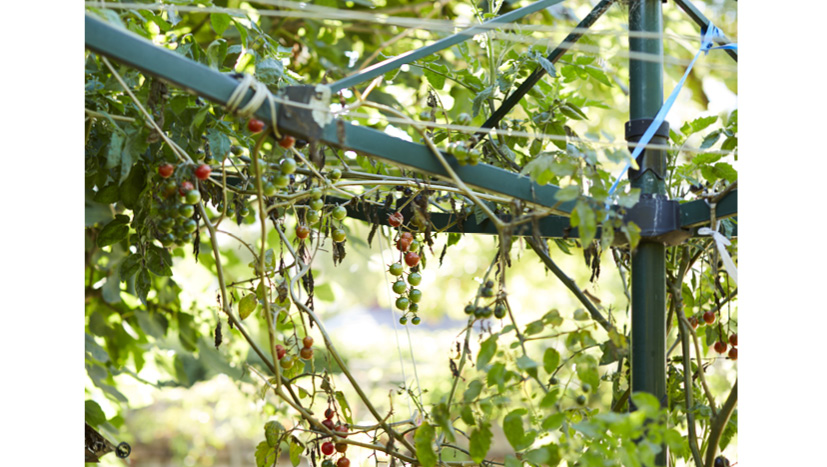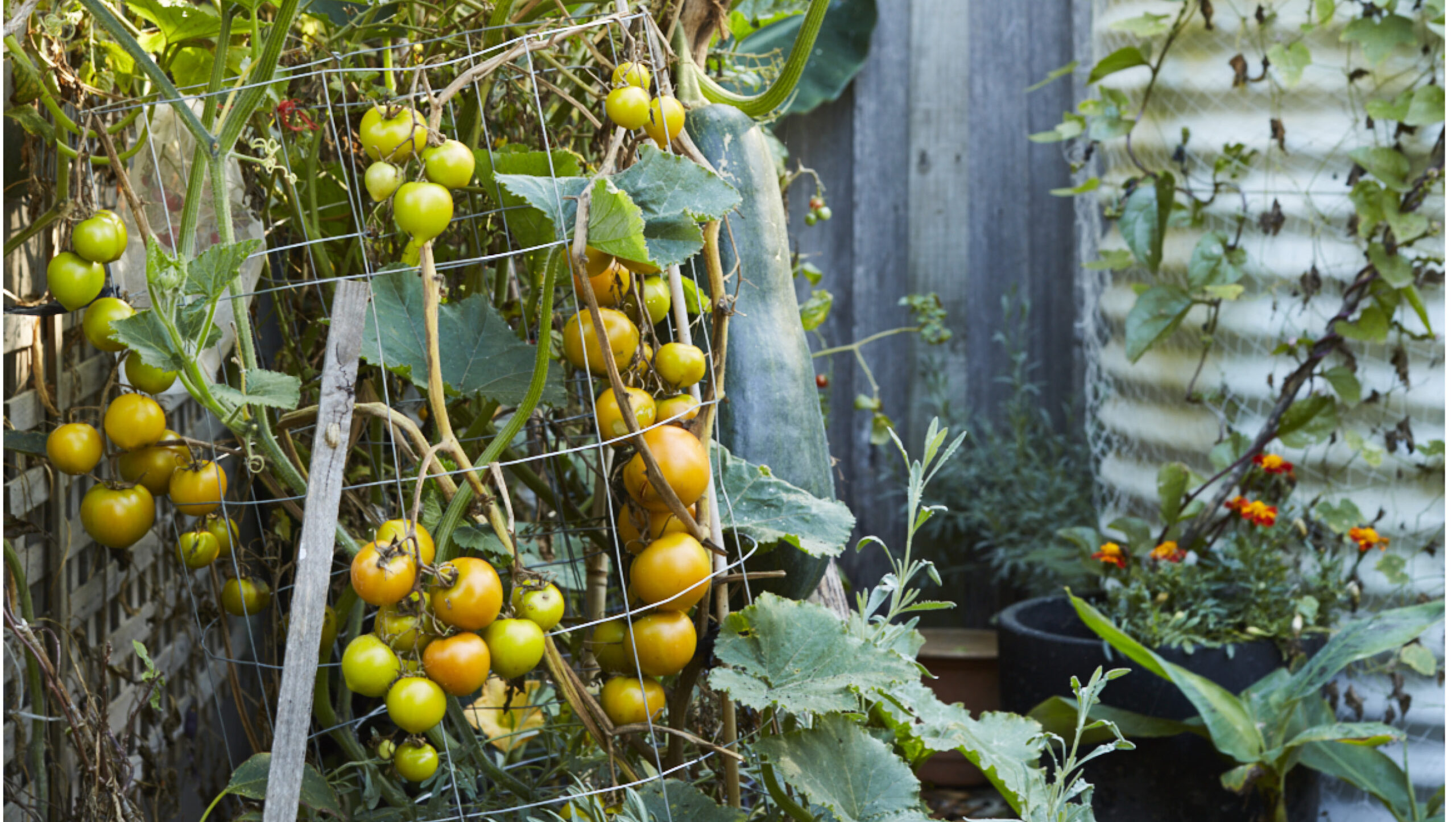Top 5 tips for gardening success in a small space
2021-12-02T02:21:12+11:00
Small gardens can be incredibly productive and Jian Liu has 5 tips to help you get more out of your limited space.
As our cities become more urbanised and our backyards shrink, many of us are living in homes with significantly smaller outdoor areas. But don’t let that put you off at having a go at growing. Small spaces can be incredibly productive and I have 5 tricks to help you get more out of your garden.
1. Go vertical
If you have limited ground space, then look upwards – vertical space is almost infinite! Being in a shady yard with never enough space for all the unusual edibles I would like to grow, we have filled our garden with arches and trellises. I have taken over our shed wall, our washing line, our fences, and our chicken coop. I have even used our water tanks and trees as a surface for climbing plants. Don’t underestimate these vertical spaces as they can dramatically improve your growing area and also allow your plants to access more light.

2. Choose high yielding, compact varieties
Focus on vegies like leafy greens (salad leaves, spinach, silverbeet) and herbs. These are fast growing, cut-and-come-again veggies that will give you many harvests and meals in the same time you might have grown just a small bunch of carrots. Another tip is to grow dwarf varieties of your favourite vegies – rather than growing a huge head of broccoli why not try sprouting broccoli, Chinese broccoli (Gai lan) or even leaf broccoli (Spigariello)? These alternatives are more compact and give you a continual harvest over the season.
3. Use pots and grow bags everywhere!
By using pots and grow bags you can plant vegies even on paving or concrete. You can fit in a dwarf peach tree on an otherwise unused section of a driveway or on a balcony. Another advantage is that if you’re in a shady yard, you can move them around easily to ‘chase the sun’ in winter.
4. Think about your vegie bed dynamically
Break up your bed in time and space. Planting in zig zags allows you to fit more in than rows. Think of your vegie patch in layers – plant along a north-south axis, ordering your plants by height, with your shortest plants in the north and tallest in the south. This allows you to increase your yields by taking advantage of the light needs of each plant without crowding any out. Maximise your space across time – plant fast growing crops like radishes or rocket in the gaps between slower growing plants like cabbage or cauliflower.
5. Use edges to plant flowers
Allow plants to cascade off the side of pots and vegie beds. Along the sides of vegie beds, I allow beneficial flowers like alyssum or nasturtium to overflow. Flowers are not just nice to look at but they perform many important functions: they attract predatory insects to make short work of any potential pests, they provide scent and colour to confuse or deter pests, and they can act as a trap crop to distract pets from attacking your actual produce.
Jian Liu is a regular writer for OG, sharing her knowledge and experience of turning a Melbourne suburban backyard into a food forest. You can follow her on insta @melbourne.foodforest. To get more tips and ideas for organic gardening, get the magazine delivered to your door! Just head here to find out how!






